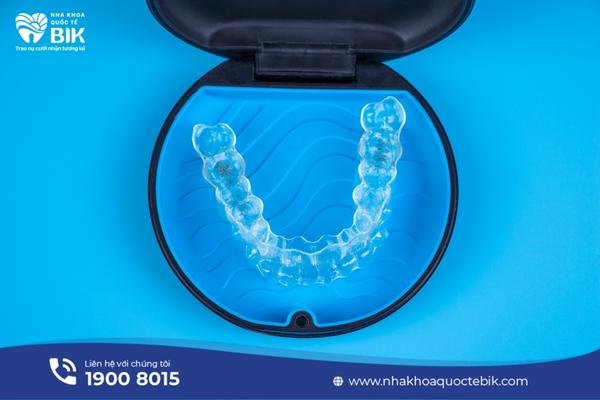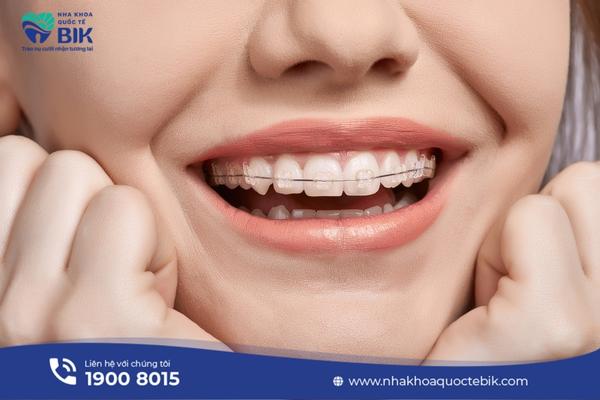Porcelain crowns are a cosmetic restoration method for the outside of the teeth, helping teeth to be white and even. However, after porcelain crowns, jaw bone problems such as misaligned bite, overbite, underbite, etc. are not completely fixed, so many people choose to have braces after porcelain crowns. However, whether porcelain crowns can be braced or not depends on many factors. The most important of which is whether your teeth are strong enough to withstand the force of braces or not.
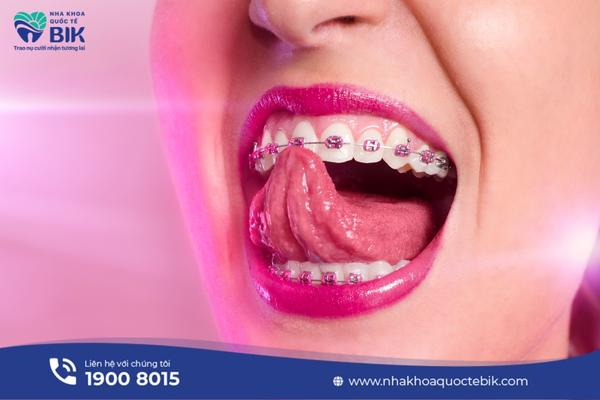
1. What is porcelain crown?
Porcelain crown is a method of tooth restoration, the doctor will grind the tooth to make a pillar for the porcelain crown attached above. This porcelain crown has the same shape and color as real teeth, so it is difficult to recognize. Porcelain crowns are only suitable for dental conditions with aesthetic defects such as discoloration, mild misalignment, tooth decay, inflamed pulp, etc.
2. What are braces?
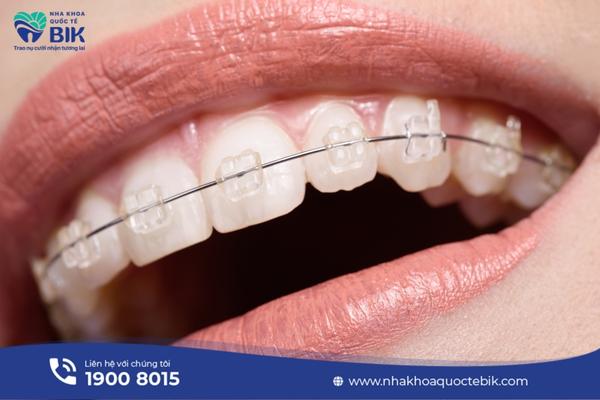
Braces are an orthodontic technique in which the doctor will use specialized tools in the dental industry to adjust the tooth roots to the desired position. Braces bring long-term effectiveness, effectively correcting problems such as overbite, underbite, misaligned bite, etc.
Because they bring permanent effectiveness, a course of braces takes 1-2 years to complete, compared to the porcelain crown method which only takes about 3 days.
3. Can you get braces after porcelain crowns?
Whether you can get braces after porcelain crowns depends on the specific cases:
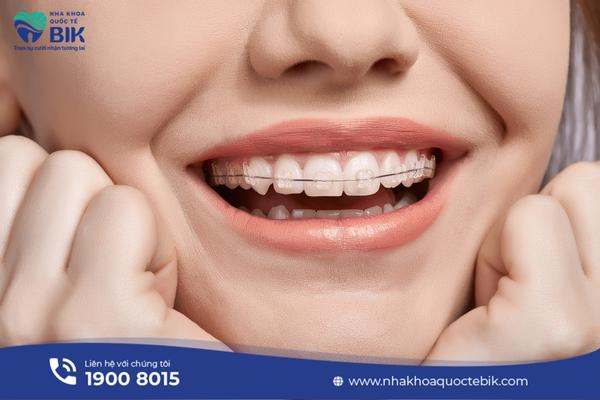
3.1. Cases where braces can be used
In cases where only one or a few teeth are covered with porcelain crowns, braces can still be used. To get braces, the doctor will attach braces or braces to the porcelain teeth. They will apply force simultaneously to the porcelain teeth and the real teeth inside, causing the tooth roots to move. However, it is important to choose a highly skilled doctor to avoid the situation where the porcelain teeth break due to the force affecting the real teeth inside.
3.2. In case you cannot get braces after getting porcelain crowns
When you have had porcelain crowns for the entire jaw, you do not need to get braces because when getting porcelain crowns for the entire jaw, the doctor has calculated the position of the teeth to ensure the highest aesthetics. In addition, when getting porcelain bridges, you also cannot get braces because the teeth are firmly fixed in the jaw bone.
4. Why do you need braces after porcelain crowns?
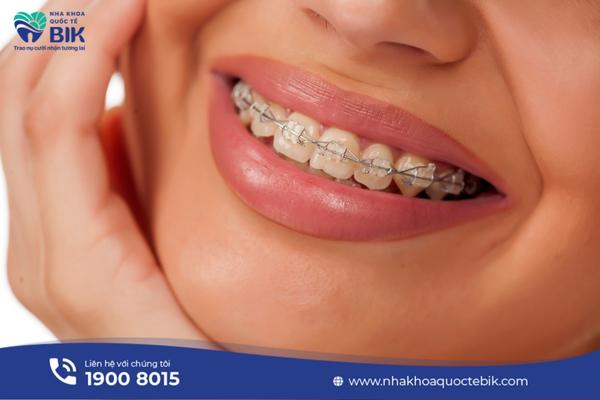
The porcelain crown method only helps you improve the external aesthetics of your teeth, helping your teeth to be white and even. However, to fix the defects of the entire jaw such as protruding teeth, underbite, braces must be performed.
There are also cases where customers have had porcelain crowns but choose an unreliable dental clinic, have porcelain crowns that are not up to standard, or follow the wrong procedure, leading to reverse bite, deep bite, etc., so braces must be performed again.
5. Can you get braces after porcelain crowns?

To determine whether you can get braces after porcelain crowns, the doctor must also rely on the specific factors below:
5.1. Remaining tooth tissue
When covering the tooth with porcelain, it means that the real tooth inside the porcelain layer is ground down. Therefore, if the remaining tooth after grinding is large enough to withstand the tightening force of the braces, then braces can be performed.
5.2. Quality of porcelain teeth
If the quality of the porcelain teeth is not guaranteed, and is not well bonded, it is very likely that the porcelain teeth will be popped out by the force of the braces. To check, the doctor will use a specialized tool to examine the porcelain tooth root area to see if there is continuity or a gap.
5.3. Limitation of tooth movement
In cases of severe underbite or overbite that require the tooth root to be moved a long distance, the doctor will also consider whether the tooth is strong enough to avoid root resorption or the tooth root being pulled out of the bone.
5.4. Are the teeth stiff?
Because stiff teeth are more difficult to align, the doctor will check by tapping on the tooth to listen for the sound. If the sound is solid and resonant, 20% of the tooth root has been affected. In addition, the doctor will observe the gum line, chewing plane, biting plane and take X-rays if necessary.
So after porcelain crowns, braces can still be done, but must meet all the criteria to ensure you have a safe porcelain braces treatment, achieve maximum efficiency as well as limit pain and discomfort during the braces process.
If you are interested in braces but are hesitant about which braces method to choose, as well as worried about the cost and treatment time, please contact Hotline 0975686969 or go directly to the dental clinic for detailed advice and support.

